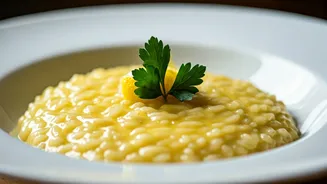Italian Coffee Culture
Italian coffee culture is deep-rooted, going far beyond a simple caffeine fix. It's a social ritual, a moment of pause, and a meticulously crafted experience.
Espresso, a concentrated shot of coffee, is the cornerstone. Served in small cups, it’s consumed quickly, often standing at the bar. Cappuccinos, with their frothy milk topping, are enjoyed at specific times. The preparation methods are just as significant. Baristas are highly skilled, and coffee blends are carefully selected to create the perfect flavor profile. Beyond espresso and cappuccino, there are variations like macchiato (espresso with a dash of foamed milk) and latte (espresso with steamed milk). The pace of coffee consumption is also distinct. It's a quick, efficient process, aligning with the fast-paced nature of many Italian daily routines.
Cappuccino Timing Matters
The conventional wisdom in Italy suggests avoiding cappuccino after meals. The primary reason for this has to do with the digestion process. Italians believe that the combination of milk, which is in a cappuccino, and a full stomach can hinder digestion. Milk, particularly the fat content, may slow down the digestive process and cause heaviness. This is in contrast to espresso, which is considered a digestivo, believed to aid in digestion. The cultural preference for cappuccino is during breakfast or mid-morning. It's seen as a lighter beverage to enjoy on an empty stomach. This specific timing aligns with the belief that it offers a balanced beginning to the day, without disrupting the body's natural processes. Following lunch or dinner with a cappuccino is far less common, due to concerns regarding digestion and the traditional roles these drinks play in their eating habits.
Digestive Science Explained
From a scientific standpoint, the Italian viewpoint aligns with some established understandings of how the body processes food and drink. Milk contains fat and protein, which take longer for the body to break down compared to simpler substances. Introducing milk to a stomach already occupied with a meal may prolong digestion. The body must work to process both the meal and the added milk, potentially causing discomfort or a feeling of fullness. Coffee itself can have a complex impact. Caffeine may stimulate the digestive system, but for some, it can also lead to acid reflux. The combination of caffeine and milk could exacerbate these effects. The acidity of coffee could potentially interact with the fats and proteins in milk, potentially affecting the digestion efficiency. Understanding these interactions illuminates the logic behind the Italian custom.
Dining Etiquette and Tradition
Italian dining culture has strong ties with tradition and deeply rooted beliefs. The avoidance of cappuccino after meals is one of many customs that guide the experience. Italians typically approach meals with specific structures and timing. Antipasti (appetizers), primi (first courses), secondi (second courses), and dolci (desserts) are all served with intention. Beverages have set roles. Water and wine often accompany the meal, espresso comes afterward, and cappuccinos are relegated to specific times. This tradition extends beyond personal preference and encompasses a broader concept of respect for the meal itself. It shows an understanding of how these customs contribute to a more enjoyable and efficient dining experience. It highlights the importance of preserving established customs within an evolving culinary landscape. The emphasis is on maintaining the quality of the meal while honoring the traditions that define Italian cuisine.
Embracing Italian Practices
Applying the Italian concept to your dining habits involves embracing an alternative approach. Instead of concluding a meal with a cappuccino, consider other options. Espresso, with its intense flavor and potential digestive benefits, is a popular alternative. Herbal teas or other non-caffeinated options can also be consumed without conflicting with digestion. The focus is to choose beverages that complement the meal without disrupting the digestive process. Adjusting to this practice may take some getting used to, but it could lead to an enhanced dining experience. Observe how you feel after meals, experiment with different beverage choices, and see how your body reacts. Embracing Italian traditions is not simply about what you drink but also about enjoying the meal and the social aspect of dining in a more thoughtful way.











